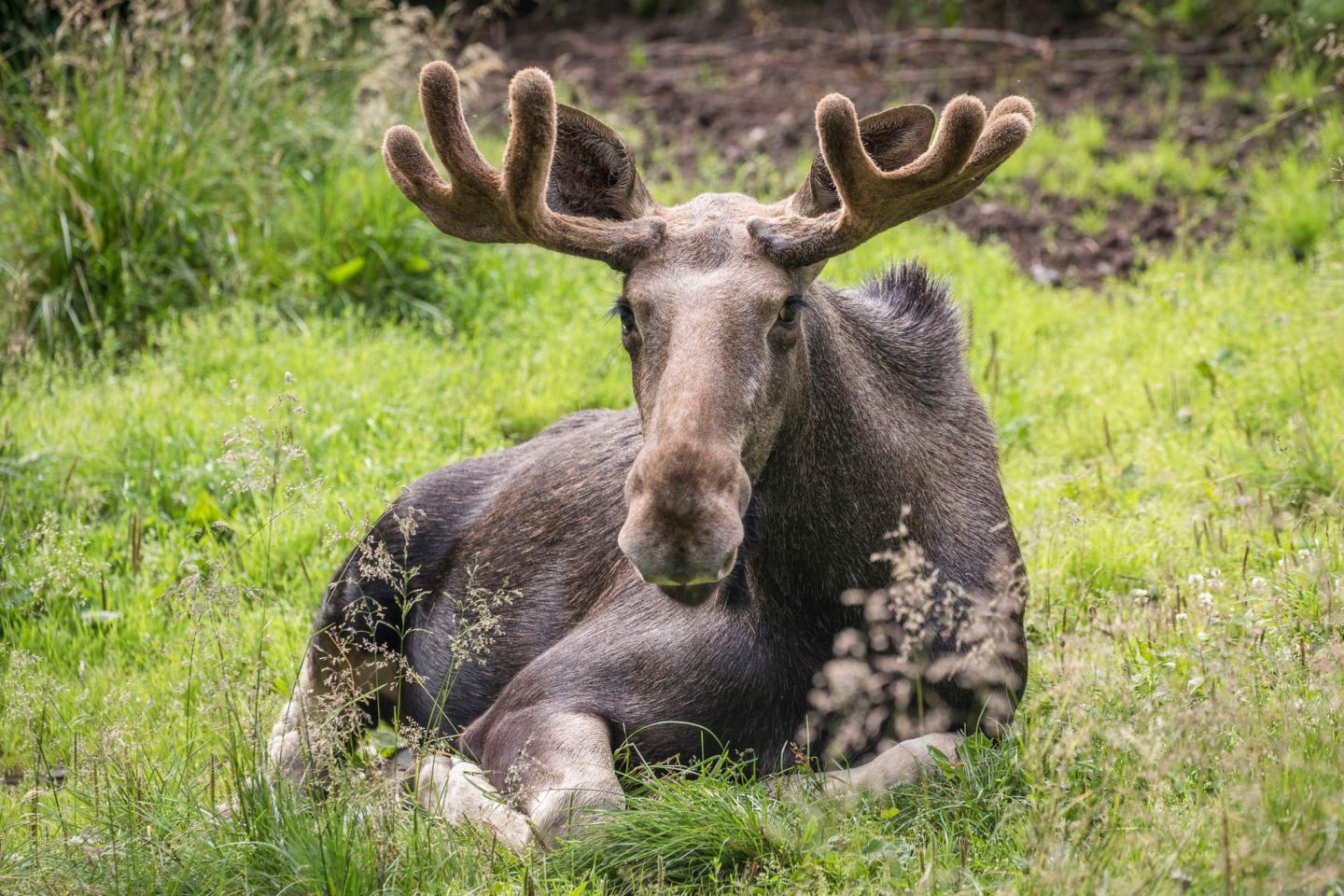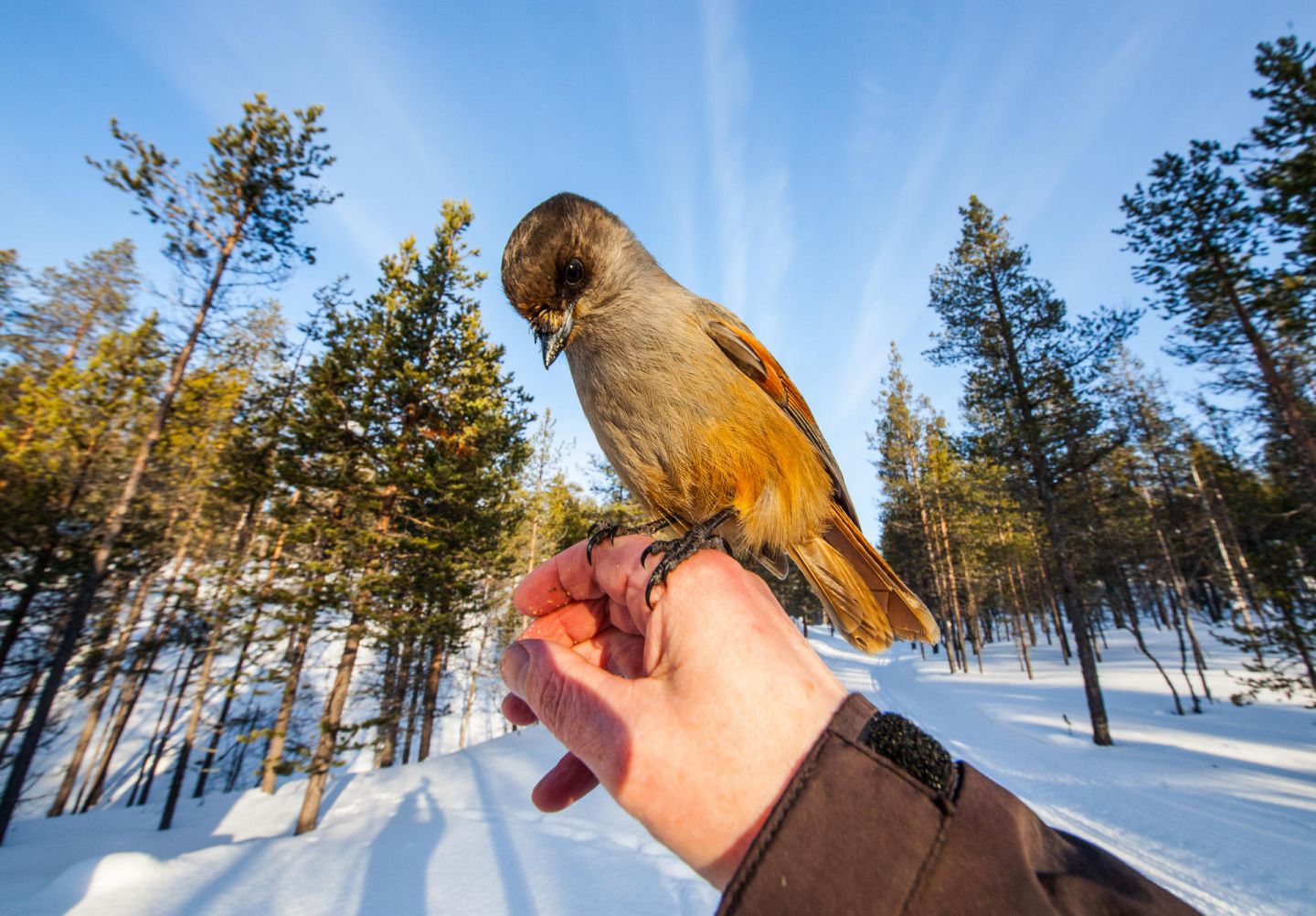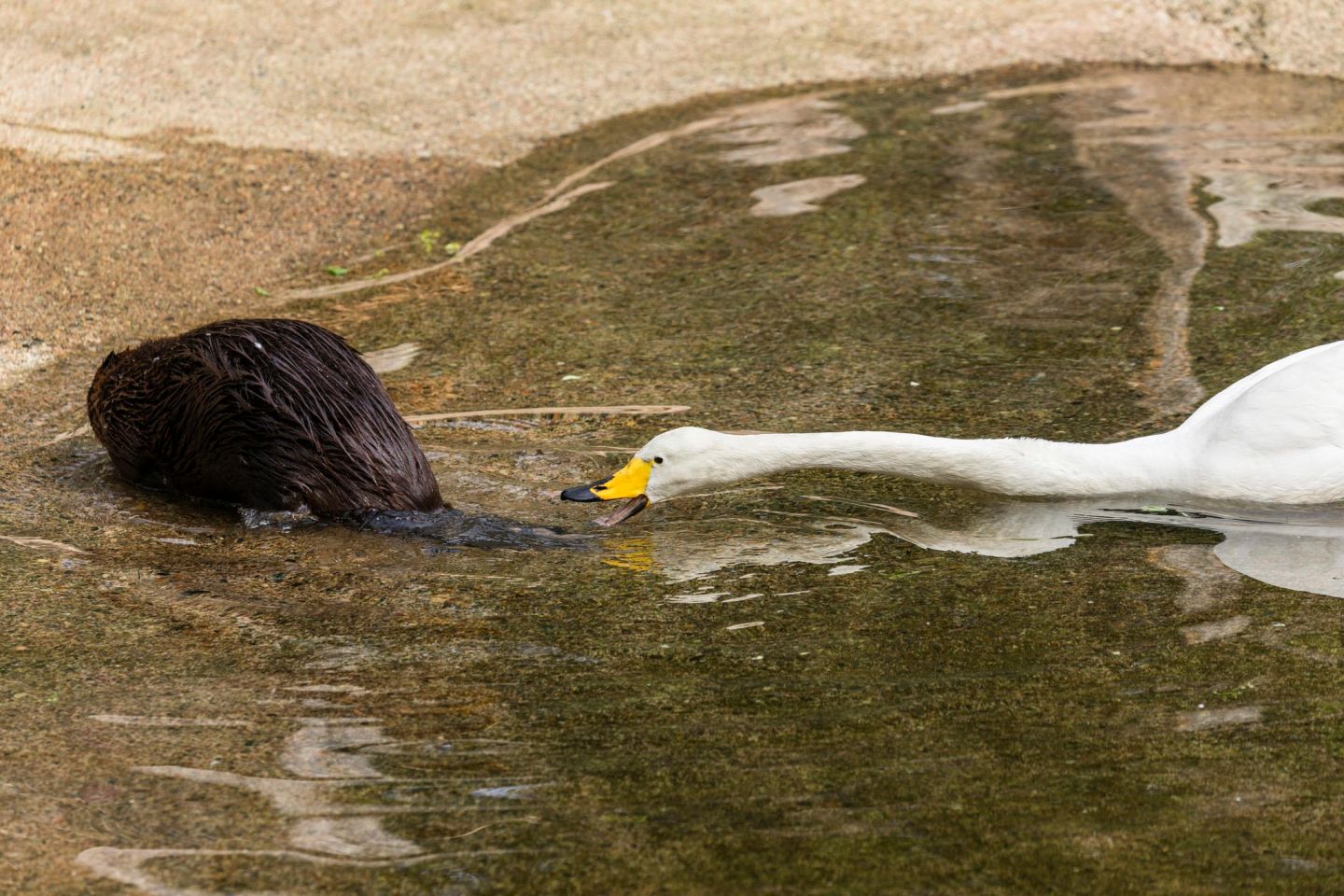Arctic wildlife are an integral part of our wilderness. Some, like bears, aren’t so easy to spot. Others, like Siberian Jays, will literally sit in your hand and make conversation.
What is it about seeing wild animals going about their normal daily lives that is so rewarding? It’s hard to say, but in Finnish Lapland, it’s not at all uncommon to come across Arctic wildlife just doing their thing. Here are some of the wild animals you might expect to see during a visit to Lapland. Some, you may see right outside your windows, while others take a bit of planning and a lot of luck.
Fangs & Fur – wildlife on the prowl
Just like bears in fairy tales and children’s stories, these huge beasts are omnivorous, snacking down on berries, mushrooms, bugs and even other woodland creatures. They hunt at night and hibernate in winter. Brown bears are most often spotted in southern Lapland. If you happen to see Finland’s national animal, consider yourself lucky—more likely a bear has already seen you multiple times and you’ll never even know it’s out there.
Wolves are rarely spotted in Lapland, their populations strictly monitored and maintained. They move in packs and don’t usually venture too close to inhabited areas.
Wolverines are small and ferocious—it’s said that the thought of wolverines keep reindeer herders awake at night. These predators can take down adult reindeer.
Lynxes, like all cats, practically walk around wearing crowns. These majestic creatures are typically loners, with huge territories spanning up to 1000 square kilometers. Due to conservation efforts, the lynx has seen a comeback in recent decades.
Woodland creatures
As rare as it is to see a brown bear or a lynx prowling around in the wilderness, seeing other Arctic wildlife isn’t so uncommon. Drivers often see red foxes darting across lonely country roads. The much rarer and endangered Arctic fox lives above the treeline, but as global warming makes the Arctic more amenable, red foxes move northward, taking over the Arctic fox’s habitat. Elk also occasionally pop up on the side of the road—although it’s best to keep driving if you come across one of these brutes.
You can often catch a glimpse of Arctic animals by looking out your window. Squirrels and hares are active all year round, leaving tracks across the snow. If you leave the lights of the towns and villages behind to wander into the marshes, forests or onto the fells, you might come across adorable stoats—aka ermine or weasels. White-tailed deer, introduced to Finland in the early 20th century, have proliferated across the country.
Let’s address the elephant in the room. (There are no elephants in Lapland.) We’re talking about reindeer. Reindeer are not wild animals, not exactly. They are semi-wild. Virtually every reindeer in Lapland has an owner, but that doesn’t stop them from roaming the wilderness in search of food. The vast majority are counted a few times a year, culled and then released back into the wild. There’s almost a guarantee that any visit to Lapland will result in the sighting of a reindeer (or six). They are everywhere, and there are more of them than of us. No need to be alarmed—they’re herbivorous.
Look! Up in the sky! It’s a bird!
Birds are perhaps the easiest way of seeing Arctic wildlife in action. The Siberian Jay, for example, is so friendly that they will often perch on your hand to nibble on offerings. Ravens and crows are found virtually everywhere, honking and croaking at each other all year round. In the north, you might come across the rock ptarmigan restringing guitars, or whatever rock ptarmigans do all day. Cranes and goshawks are not an uncommon sight, if you know what to look for. A special treat in the big blue sky is the sighting of a golden eagle, perhaps the Arctic’s most regal bird.
And let’s not forget owls. Who? I hear you ask, because you know Finns love terrible puns. The Arctic is home to many different owl species, including the boreal, great grey, hawk, Ural and short-eared owl. But perhaps the most stunning is the snowy owl. It’s not uncommon to see an owl relaxing ona tree stump beside the road. It can be magical to see (but not hear) an owl fly effortlessly overhead. Being around owls can get a bit too real if you’re in an area with lots of them though, as they leave their pellets (the undigested bones, fur and feathers of their victims) everywhere . They may also defend their nest with vigor, so approach with caution (or better yet, just take a photo with a nice long lens.)
Get wet – Arctic wildlife in the water
Lapland’s wild animals aren’t confined to the forest or the skies. There are plenty of Arctic animals who prefer water over woodland. Otters are perhaps the cutest of these animals, floating on their backs and holding hands while they sleep. Ducks and swans are a very common sight under the Midnight Sun. And let’s not forget salmon—which you probably won’t see unless you’re on a fishing trip. Every summer, legions of these fish make their way north to spawn and propagate the species.
The destruction and construction wrought by beavers is a sight to behold. These furry guys will turn rivers into ponds, and their impact on trees is plainly visible. And if they’re spooked, the sound of their wide tails whacking the water’s surface is a sure warning.
Wildlife you won’t see in Lapland
Lions, tigers and polar bears, oh my! Many people think of the Arctic as a singular place, but the Arctic is huge, and there are many Arctic animals you might wish to see in Lapland … only to be disappointed. So let’s go through some of the animals you shouldn’t expect.
Polar bears. The only polar bear in all of Finland is at the Ranua Wildlife Park. Polar bears are practically marine animals, and Finland has no direct connection to the Arctic Ocean. The same goes for walruses, narwhals and seals—without the ocean, you just won’t find these animals hanging around.
What about penguins? Sorry, but you’re at the wrong Pole. Penguins are exclusive to the other side of the planet. Puffins, you might expect, but again, these seabirds are found on coasts elsewhere in Scandinavia.
Lastly, if you’re meandering around a green forest, the sounds of Arctic animals chirping, buzzing and honking all around you, slapping mosquitoes and sweating off some of your Midnight Sunscreen, you might wonder … am I about to get bit by a snake? The answer is probably not. While there are a few snakes that have migrated to Lapland, you’re unlikely to see one. The snakes that are found in Lapland are not venomous, so unless you’re allergic, or your dog gets too close, you should be just fine.
Looking for more wonders of nature? Check out why Lapland is a winter wonderland.
Looking for some fun in the sun? Lapland hosts a magical Arctic summer every year.





















